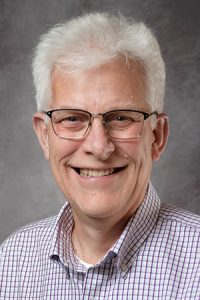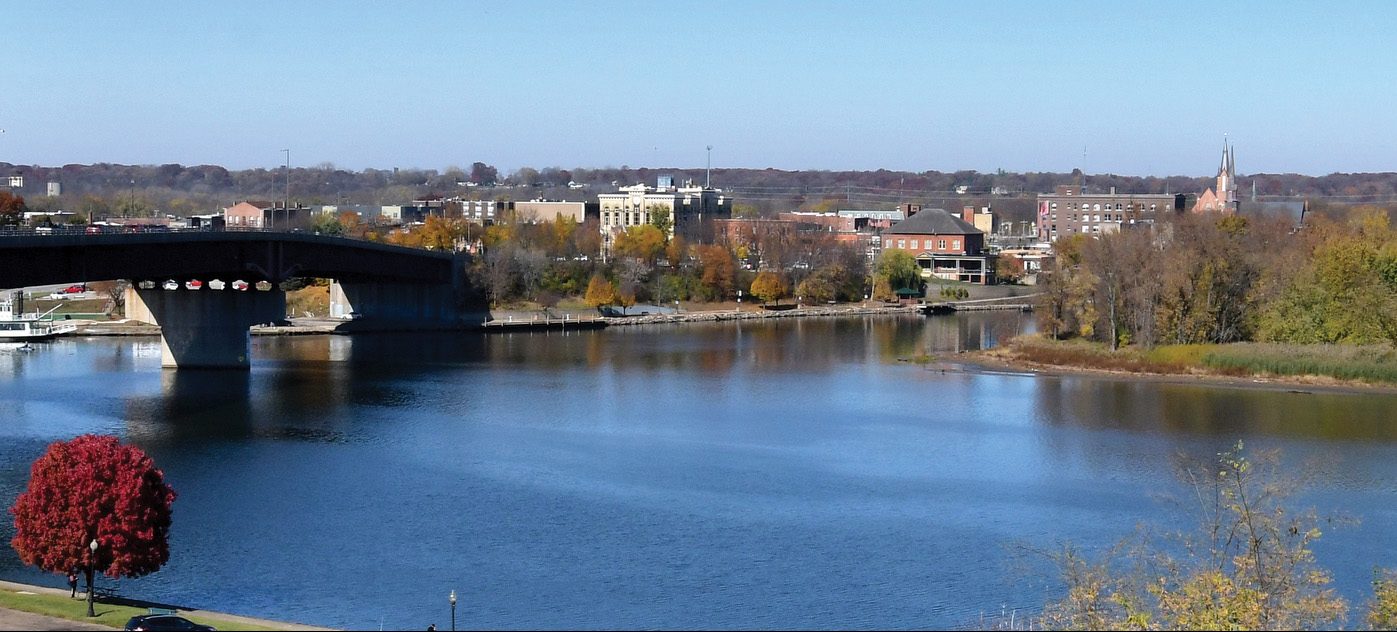The present embraces the past in scenic, historic river town.
Ottawa has been called one of the “10 small towns in Illinois that offer nothing but peace and quiet.”
That’s a curious take on the city of more than 18,000 next door to the thriving Starved Rock corridor, both of which have reinvented themselves to become popular destinations of work and play.
Indeed, Ottawa is, and has been for more than a century, a hub of manufacturing, transportation and commerce situated about an hour’s drive north of Peoria and some 85 miles southwest of Chicago, with busy Interstate 80, rail and water connecting the community to global markets.
During the week, more than 6,000 commuters invade this community at the confluence of the scenic Illinois and Fox Rivers for jobs. Thousands more may arrive on weekends for entertainment, dining and historical tourism. It’s a combination that fuels progress and optimism in all quarters.
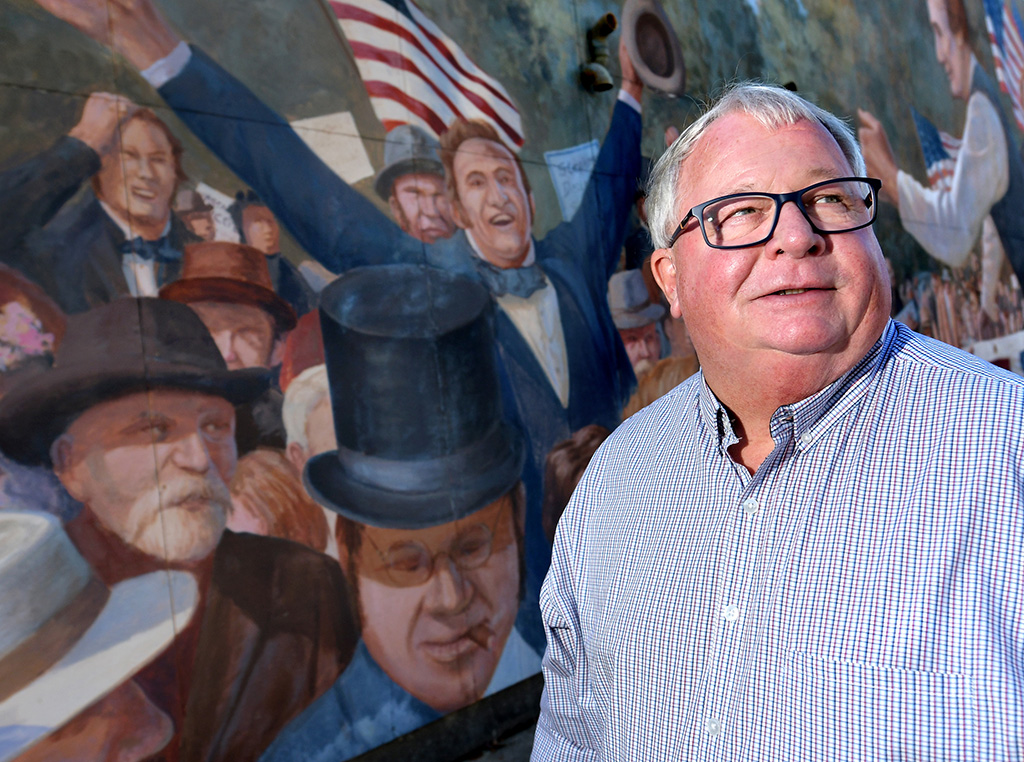
“We’ve got something going on all the time,” said Ottawa Mayor Daniel Aussem as he ticked through a list of industrial developments, family-friendly festivals, residential construction projects, riverfront attractions and outdoor destinations that continue to shape his hometown.
A TALE OF TWO RIVERS
At any given time along the banks of the two waterways, residents and visitors might find a BBQ competition, marathon road race, car show, fireworks display, wine and art festival or the annual Chris Kringle Christmas market, to name just a few.

Mayor Aussem said a $4 million grant is earmarked for new festival and concert venues on the riverfront, part of a much grander plan to attract people to the water’s edge.
“When I got elected, I said I wanted to do more things that are kid-friendly and free,” said Aussem. The Kites in Flight Fest, which Aussem helped launch two years ago, is an example.
a $4 million grant is earmarked for new festival and concert venues on the riverfront.
One of the most recent additions to the riverfront is the St. Genevieve, a newly renovated and outfitted sternwheel riverboat that began offering sightseeing tours this fall. Partners Gentry Nordstrom and Nathan Weiss—both Ottawa natives and business owners—purchased the 60-year-old, 149-passenger vessel last fall in Cincinnati and brought it home for extensive remodeling. They’re offering weekday and weekend cruises and expect to continue shore-side events through the winter.
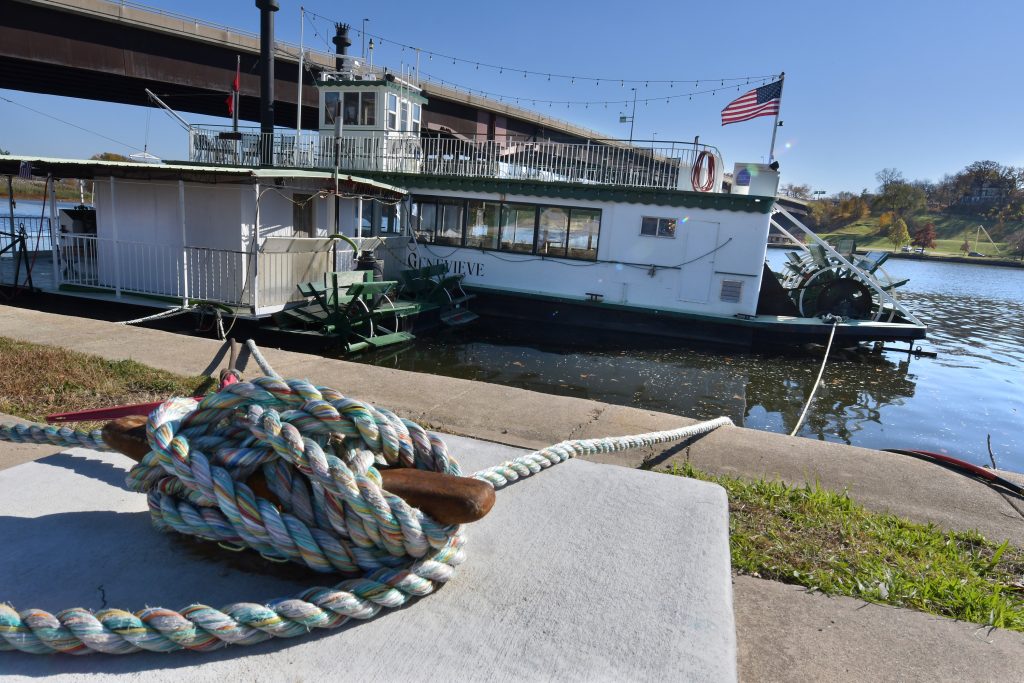
“We are extremely proud of our hometown and think we have the best riverfront,” said Nordstrom.
Not far from the boat landing is the former site of Central Middle School, which was moved to higher ground on the south side of the river. The property is about to get a new $26 million YMCA, bringing even more people and recreation options to the riverfront.
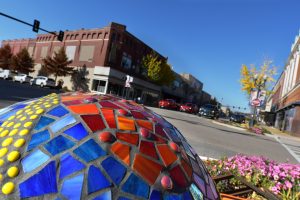
Jeff Hettrick, executive director of the Ottawa Chamber of Commerce, said his organization has expanded its mandate to promote festivals and local events.
Some ask: How does that help our businesses?
“When someone comes to town, say to interview for a job, and they see something is happening in town all the time, they say, ‘This is a nice town,’” said Hettrick. “Of course, visitors and new residents bring dollars to spend and support the local economy. That’s good for everyone.”
TAKING CARE OF TOURISTS
Old Town Ottawa is where visitors find locally owned coffee houses and dining options from sushi and fresh seafood to gourmet burgers, ethnic favorites, pub fare, family-friendly menus, pizza and more—not a national chain in sight. Within a few easily walkable blocks are boutiques and gift shops, art galleries and public art, the Roxy Cinemas, the homegrown Tangled Roots Brewery and Lone Buffalo restaurant, and a bar where you can have “dynamite drinks” with the fishes.
Meanwhile, visitors may choose to plummet from the sky at Skydive Chicago northeast of town. For the more earthbound, there are public parks, river walks, and more than 250 acres of open prairie, woodlands and rugged ravines at the Dayton Bluffs Preserve just off Route 71.
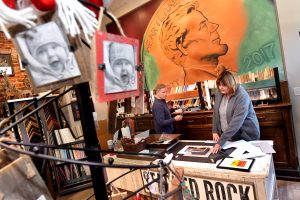
Some came to Ottawa as tourists and decided to stay. Take Hank and Caroline Wolf, the owners of Heartland By Hand, for example. In 2010, they built a second home at Heritage Harbor, a nearby resort community and marina on the Illinois River, to occasionally escape their permanent home in Orland Park.
Later, retirement sent them looking for a place where they could “do something we enjoy and I could work with my hands,” said Hank.
After four years of planning and renovation, Heartland By Hand opened in May 2021. The unique gift and framing shop is housed in the former Sherer and Gleim Flour and Feed (1903) building on Main Street. The couple and their dog, Lincoln, are now permanent residents.
“People here in Ottawa look you in the eye and say ‘hi’,” Hank observed. “Everything here is authentic, including the history… and they invite you to become a part of it.”
A PROUD PAST
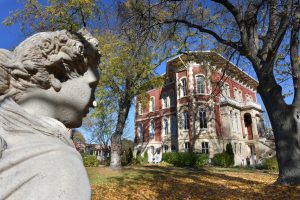
History is everywhere in Ottawa. One of the jewels is the Reddick Mansion and Gardens on West Lafayette Street, just across from Washington Square Park, site in 1858 of the first of the famous debates between Abraham Lincoln and Stephen A. Douglas.
Colorful public murals tell the region’s story. The first Europeans, Jacques Marquette and Louis Jolliet, visited the area in 1673. Fort Ottawa—the name comes from the Native American word awdawe, which means “to trade” — sprang up in the 1830s and the town was incorporated in 1853.
‘People in Ottawa look you in the eye and say hi. Everything here is authentic.’—Hank Wolf
European immigrants flocked to Ottawa to farm the rich soil, but it was the construction of the Illinois and Michigan Canal, completed in 1848, that put the town on the map.
The canal connected the Illinois River to Lake Michigan, making it economically feasible to transport sand, gravel, clay and agricultural commodities to larger markets. In an amazing feat of engineering, the Fox River Aqueduct once carried the canal waters over the river. A restored tollhouse on Columbus Street serves as a visitor center for the I&M Canal National Heritage Area. The well-maintained towpath can be hiked and biked all the way to Chicago.
Out on the west side of town is the Ottawa Avenue Cemetery, burial site of William D. Boyce, a Chicago newspaper publisher and Ottawa resident who is credited with bringing the Boy Scout movement to America. Scouts from across the country make pilgrimages to his grave and explore a treasure trove of memorabilia and local history at the Ottawa Historical and Scouting Museum on Canal Street.
Meanwhile, Ottawa native Bob McGrath—one of the original human characters on Sesame Street—is portrayed in the mural at Jefferson School.
INDUSTRY AND OPPORTUNITY
The industrial history of Ottawa has taken a number of twists and turns. An abundance of “the purest silica sand you can get” has made this a center for sand mining and glassmaking for decades, according to Dave Noble, the citys economic development director. Locally mined “fracking sand” is prized in the petroleum industry, he said.
Countless drivers have seen the world through the automotive glass produced here. Glass was also fashioned into colorful Peltier marbles beginning in the late 1920s. Collectors now seek the rare specimens.
A tragic chapter in Ottawa’s history is memorialized at the corner of Clinton and Jefferson streets. There, a statue of a young woman serves as a memorial to the workers who died after ingesting radium while working for the Radium Dial Company in the early 1900s.
Contrast the leisurely pace of downtown with the north side of town, where two interchanges at I-80 hum with commerce and traffic, including big box retailers, fast food and fuel for trucks and weary travelers.
Noble said more than 3,000 jobs are centered around the Route 23 exit, where companies such as Kohls, PetSmart and Tyson Foods have distribution centers. Manufacturers of plastics, motorcycle travel conversion kits, yearbooks, imaging products, packaging components and automotive belting products take advantage of a skilled labor force and quick, easy access to transportation.
A couple of miles off the interstate at the Route 71 exit, some 536 acres of the Ottawa Industrial Park are ready for further development. “You never know what’s around the corner,” said Noble, summing up the future of Ottawa in one word: “Opportunity.”
Learn more about the city of Ottawa online at cityofottawa.org/ and at pickusottawail.com/.
